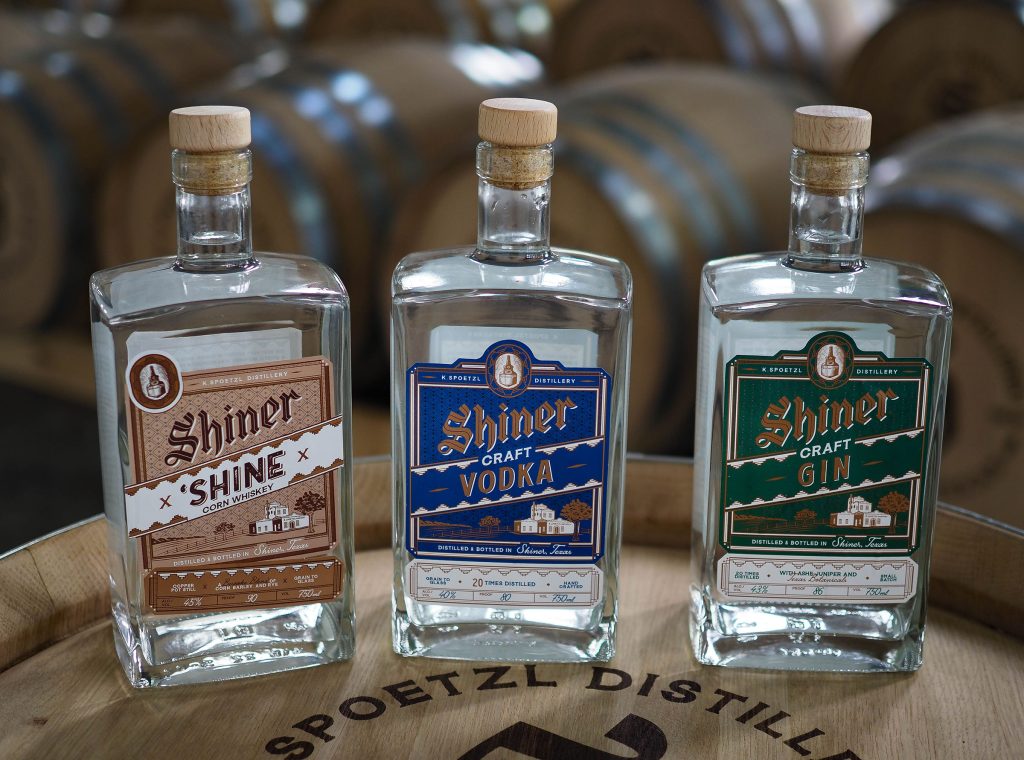Behind-the-Scenes at a Distillery in Galveston: Tours and Tastings
Behind-the-Scenes at a Distillery in Galveston: Tours and Tastings
Blog Article
Grasping the Craft of Distillation: a Deep Dive Into Distillery Traditions
Exploring the complex art of distillation reveals a world soaked in classic customs that have shaped the spirits we appreciate today. From the old beginnings of purification methods to the contemporary development of distillery devices, each step in the process carries with it a rich tapestry of history and expertise. As we delve right into the fragile balance of typical versus contemporary distilling practices and reveal the relevance of essential ingredients, a deeper understanding emerges of the extensive effect distillery customs carry the spirits we savor.
Beginnings of Purification Strategies
The advancement of purification methods has a rich history that traces back to ancient worlds. The idea of separating elements based on their different boiling points laid the foundation for the innovative purification procedures we have today.
The earliest proof of purification go back to around 3000 BC in Mesopotamia, where clay pots were utilized to distill perfumes and fragrant oils. The Egyptians better advanced these strategies, using distillation for medicinal purposes and embalming practices. The Greeks, significantly figures like Aristotle and Hippocrates, contributed to the academic understanding of purification.
In time, distillation infect areas like India, China, and the Middle East, each culture including its special touch to the craft. The development of distillation strategies proceeded with the Middle Ages and the Renaissance, at some point bring about the varied range of purification procedures employed in modern distilleries worldwide.
Advancement of Distillery Devices

With developments in innovation and a deeper understanding of the distillation process, modern distilleries currently utilize a variety of innovative tools to generate spirits of the best. Today, distillation equipment includes column stills, reflux stills, and hybrid stills, each made to accommodate certain distillation needs. These modern-day stills supply better temperature law, enhanced distillation accuracy, and better performance in separating alcohol from contaminations.
Along with stills, distilleries now make use of sophisticated condensers, fermenters, and filtration systems to more fine-tune the extract. The development of distillery equipment proceeds to play a vital role fit the diverse array of spirits offered in the market today.
Standard Vs. Modern Distilling Practices
In analyzing distilling techniques, the contrast in between modern and standard methods exposes substantial developments in performance and quality. Standard distilling techniques typically entail time-honored methods gave via generations, emphasizing workmanship and workmanship (Seawall Bar). These methods normally depend on copper pot stills and hand-operated processes that need a high degree of ability and experience from the distillers. Conversely, contemporary distilling techniques utilize cutting-edge innovation and advancement to streamline production processes and improve consistency. Automated systems, electronic controls, and modern equipment enable modern distilleries to generate spirits much more effectively and with higher accuracy.
While standard distilling methods are treasured for their heritage and the special flavors they produce, modern approaches supply benefits in terms of scalability, high quality control, and sustainability. By incorporating scientific advancements and modern-day design, distillers can enhance production, reduce waste, and fulfill the needs of today's market more effectively. Inevitably, the option between contemporary and conventional distilling techniques usually depends upon the distillery's goals, worths, and target market.
Key Active Ingredients in Distillation Process
Within the why not look here craft of purification, the selection of vital components plays an important role in establishing the flavor profile and top quality of the spirits created. The primary active ingredients utilized in the distillation procedure are generally water, yeast, and a fermentable resource such as grains, fruits, or sugarcane.
Water is an essential component as it not just weakens the alcohol content to a tasty level yet likewise influences the general mouthfeel and structure of the spirit. The top quality and mineral material of the water utilized can significantly influence the final item.
Yeast is another necessary ingredient that transforms the sugars existing in the fermentable source into alcohol via the process of fermentation. Different pressures of yeast can produce varying aromas and flavors, adding to the unique qualities of the spirit.

Effect of Distillery Traditions on Spirits
The impact of longstanding distillery traditions on spirits prolongs past the choice of vital components, forming the extremely significance and character of the last distilled products (Seawall Bar). These customs, gave through generations, play a critical function in specifying the unique preference accounts and high qualities that identify one spirit from another
Distillery customs incorporate a variety of methods, from the specific methods made use of in purification to browse around these guys the option old processes utilized. The use of standard copper pot stills in bourbon manufacturing is believed to pass on specific tastes and features that are very valued by connoisseurs. Similarly, the aging of spirits in oak barrels, a method deeply rooted in distilling customs, adds to the growth of intricate aromas and flavors over time.

Final Thought
From the origins of distillation methods to the contemporary methods, the effect of distillery traditions on spirits is undeniable. Distillery traditions play an important duty in forming the spirits sector and protecting the heritage of purification techniques.
Throughout the background of distillation, the equipment used in distilleries has check out this site actually undertaken considerable development to enhance efficiency and top quality of the purification process.With developments in technology and a deeper understanding of the purification process, modern distilleries currently make use of a range of sophisticated tools to create spirits of the greatest quality. Today, purification devices includes column stills, reflux stills, and crossbreed stills, each created to cater to details purification needs. From the beginnings of distillation techniques to the modern-day practices, the influence of distillery customs on spirits is undeniable. Distillery practices play an important role in forming the spirits industry and maintaining the heritage of distillation techniques.
Report this page